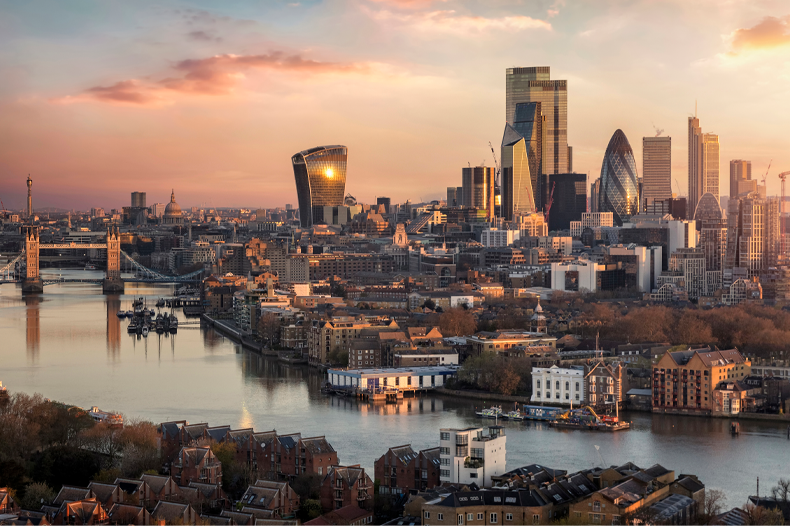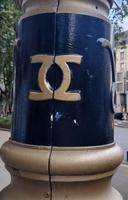How are landmarks protected by Intellectual Property rights?
Whether it’s Big Ben or the Eiffel Tower, taking and sharing photos of landmarks is far from unusual. However, did you know that the appearance of landmarks can be protected with IP rights?

We set out the various forms of protection in the UK which are relevant to landmarks, and the circumstances in which the public are permitted to take and share photos and videos.
Trade Marks
Trade mark registrations may protect the name of a landmark and be used to prevent third parties from using the same or a confusingly similar name in the course of trade. A trade mark registration can be protected indefinitely if renewed every ten years.
Who owns what?
The name THE LONDON EYE, for example, is owned by Merlin Attractions Operations Limited. Interestingly, Merlin Attractions also owns trade mark registrations for THORPE PARK, ALTON TOWERS, and MADAME TUSSAUDS. The names BUCKINGHAM PALACE, WINDSOR CASTLE, and SANDRINGHAM are owned by Flitcham Limited, which is operated by the Lord Chamberlain of the Household and the Keeper of the Privy Purse at Buckingham Palace. They would be able to enforce the trade mark rights against third parties using the same or similar names.
What else can be protected?
Trade marks may also protect the nickname and the shape of a landmark. The building at 30 St. Mary Axe in London, for example, is more commonly known as THE GHERKIN. This is a registered trade mark owned by Stone Properties (Luxembourg) S.à.r.l. Stone Properties also owns various figurative trade marks for the exterior of the building, such as:
Trade marks are only protected for the specific products or services covered by the application. Trade mark applications for landmarks should cover the physical structure, building, and scale model buildings.
They may also cover:
- the services within the grounds, such as amusement;
- services rendered within a building, such as tourism;
- merchandise such as picture frames, clothing, and ornaments.
The coverage should support the business and prevent third parties from offering the same under a similar name.
Design Rights
Design rights typically cover the outward appearance of a product, or a part of it, such as its shape, configuration, decoration, or surface pattern, so long as:
- it is novel;
- it has individual character;
- it is not dictated solely by its technical function.
UK registered design protection lasts for up to 25 years, upon renewal every five years. The proprietor of a registered design can prevent third parties from using the design and any design which doesn’t make a different impression on an informed user.
Registered design rights can protect technical drawings including architectural drawings, provided they represent a shape or configuration.
When designers apply to register a design, they should be aware that protection is limited to the design within the registration.
If Stone Properties applied for design protection using the above greyscale image of The Gherkin, its scope for enforcement would be limited to designs conveying the same overall impression – a different part of the building not shown in the design wouldn’t be automatically protected.
Artistic buildings may also be covered by the UK unregistered design right.
This is automatically protected for a period of either 10 or 15 years (depending on when the object was first sold or created). This protects the shape and configuration of a three-dimensional object, provided it is original (i.e. not commonplace in the design field).
A proprietor is entitled to prevent third parties from making articles that are the same (copied) or substantially the same (inferred copy) as the design.
Copyright
Buildings, models, works of architecture, as well graphic works such as architectural plans and drawings, are protectable “artistic works” under copyright law.
There is no formal registration for copyright works in the UK. Though copyright arises automatically, there are several ways of proving eligibility.
Notably, artistic works are not explicitly required to be fixed in a tangible form.
An artistic work must be original in the sense that it is the author’s own intellectual creation,but it cannot be dictated by a technical use or purpose.
The duration of copyright protection is the lifetime of the author plus 70 years. The Gherkin, for example, was constructed in 2003 and was designed by architect Norman Foster who is still alive today.
Therefore, copyright will continue to exist during the course of his lifetime and for 70 years after his death.
However, as is often the case, there are exceptions. The Protected Vistas of London is a framework preserving views of a historic building. It predominately protects the view of St. Paul’s Cathedral from, for example, Alexandra Palace, Primrose Hill, Greenwich Park, Westminster Pier, and King Henry VIII’s Mound in Richmond Park.
This doctrine prevents high rise buildings from being developed in places which would otherwise block a protected view.
Any copyright in St. Paul’s Cathedral would have ended at the end of the 18th Century. However, due to the protection under the “St. Paul’s Heights” buildings in The City are specifically engineered to avoid obstructing the view, such as The Leadenhall Building, AKA “The Cheesegrater”, which was designed with a ten-degree slope.
What is the creator entitled to?
A copyright owner has the exclusive right to, among other things, copy the work and issue copies of the work to the public.
The author has further rights – in the case of an artistic work, this includes the right to be identified as the author of the work; and in the case of a building’s designer, to be identified on the building.
As we have covered, it is possible to own copyright for the 3-D design of a building.
This is infringed by making a three-dimensional copy of it, either as a whole or a substantial part thereof.
Copyright is also infringed by a person who issues to the public copies of a graphic work representing, or of a photograph of, a derogatory treatment of the work.
When is photography allowed?
Section 62 of the 1988 Act provides that copyright in buildings, sculptures, or models of buildings (if permanently situated in a public place), is not infringed by:
- making a graphic work representing the building,
- making a photograph or film of it;
- broadcasting a visual image of it;
- issuing copies of those photographs, graphic works, films or broadcasts featuring the building to the public.
This principle of “Freedom of Panorama” allows people to make photos and films of, say, the London skyline.
This is important because it ensures copyright does not hinder recognition or appreciation of the \visual identity of cities and the monuments they contain– which is almost always in the interests of copyright owners (architects).
Zooming out of the UK, the Berne Convention for the Protection of Literary and Artistic Works, adopted in 1886, dictates the minimum standards for copyright protection in 181 territories.
It explicitly protects works of architecture or other artistic works incorporated in a building or other structure erected in a signatory country.
Branding
Advertising and branding on landmark buildings in The City of London are prohibited for everyone apart from the building owner or lead occupier. This protects the views of the London skyline.

The OXO Tower on Southbank was once owned by the manufacturers of OXO beef stock cubes, who were refused advertising its brand on the building. To circumvent this, the tower was engraved with “OXO” into the windows which now have neon LED lights behind them, visible from across the Thames.
Another quirk of London is the swirly ‘W’ and interlocking ‘CC’ on lampposts. Hugh Grosvenor, the second Duke of Westminster, had a ten-year long relationship with Coco Chanel.
The legend goes that the engravings on lampposts throughout Westminster were Grosvenor’s romantic gestures.
Engravings are an artistic work, specifically a graphic work under the 1988 Act. Engravings on a lamppost may fall under the definition of sculpture or works of artistic craftsmanship, in which case the Section 62 exception would apply, that is, copyright (if it subsists in the engravings) would not be infringed by taking a photograph or film.
Even though advertising in The City is highly restricted, there are creative ways of getting your brand out there.
Comment
Trade marks are useful for protecting a name or nickname of a building, as well as spin-off goods such as scale model buildings and merchandise, especially if the place attracts tourists.
A trade mark registration can be protected indefinitely, and can be enforced for as long as the building itself exists.
Due to the limited length of protection, registered and unregistered design rights are typically used for protecting seasonal products.
Since historic and artistic buildings and landmarks have the potential to stand the test of time, copyright protection is better suited to protect the intellectual creation and design in the work.
Since an author/ owner does not apply for copyright protection, it is imperative to keep all records of how, when, and by whom the design of a building or landmark came to fruition.

